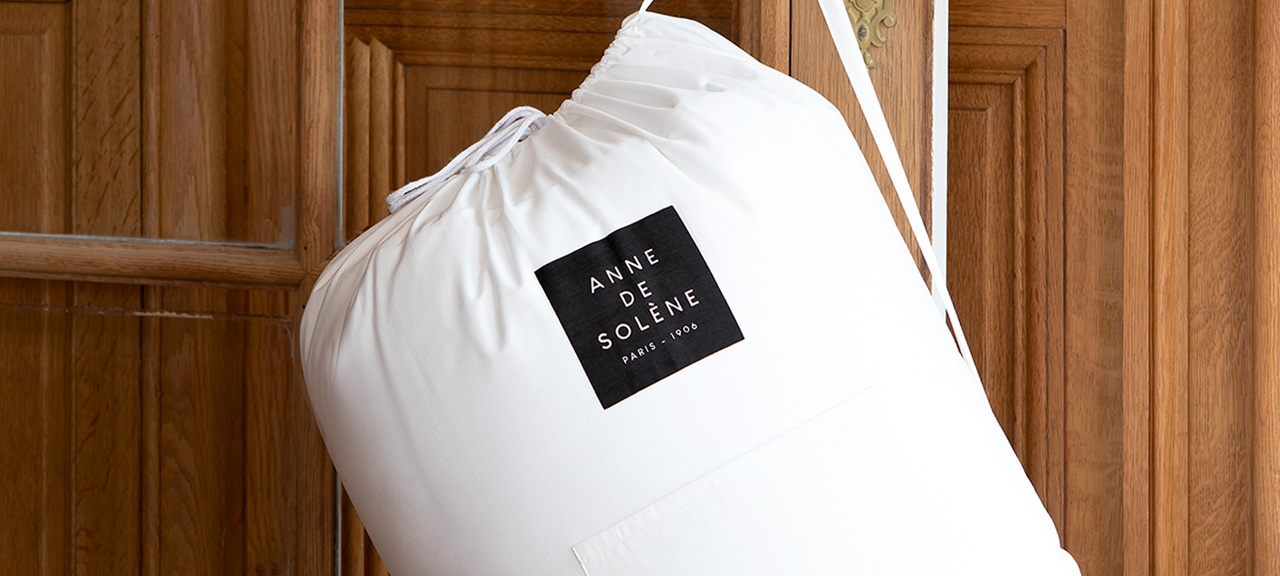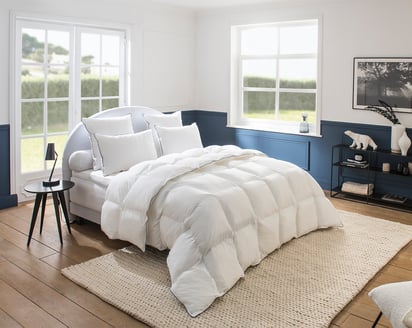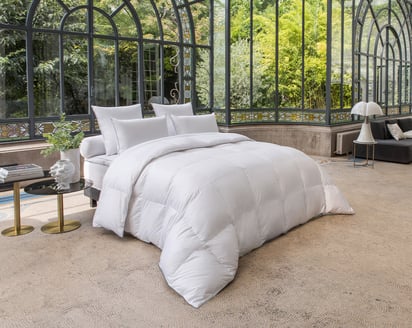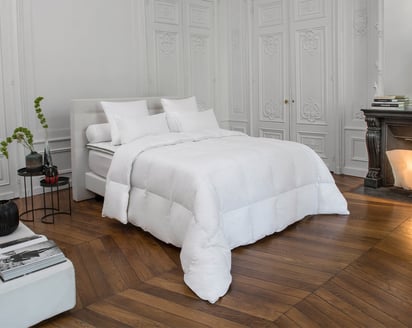When the nights grow cold and the leaves start to turn, thoughts often shift to making our beds as warm and cozy as possible. A key element in achieving that perfect bed setup is selecting the right down comforter. Whether you're purchasing your first luxury duvet or looking to upgrade an existing one, understanding the nuances of materials, warmth levels, stitching options, thread count, size, and maintenance will help you make an informed decision.
Understanding the Inner Workings of a Down Comforter
In the realm of luxury bedding , down is prized for its exceptional warmth and lightness. Down refers to the soft, fine feathers used for insulation in bedding products and comes primarily from ducks or geese. The quality of down can vary greatly, usually determined by the fill power, which describes the fluffiness of the down clusters. Higher fill power indicates better quality, as it provides more warmth with less weight.
The source of a down comforter also impacts its quality and ethical considerations. Ethically sourced down ensures that the material is collected without harming the animals, a crucial factor for many conscientious consumers today. When choosing a down comforter, always look for certifications like the Responsible Down Standard (RDS), which confirms the ethical sourcing of the materials.
Selecting Warmth Levels
The intended use of your down comforter significantly influences the warmth level you should choose. Down comforters come in various weights and warmth ratings, suitable for different climates and personal heat preferences. Typically categorized into summer, all-season, and winter weights, each type addresses specific thermal needs:
- Summer Comforters: Lightweight and ideal for hot sleepers or those residing in warmer climates.
- All-season Comforters: Versatile and suitable for year-round use in moderate climates.
- Winter Comforters: Heavier and designed for extra warmth during cold weather.
Consider your bedroom temperature and personal preferences before making a selection. Those in cooler regions may opt for a heavier, warmer comforter, whereas individuals in temperate areas might find the all-season models more appropriate.
Digging Into Stitching and Construction
Stitching plays a pivotal role in the durability and effectiveness of a down comforter. Quality construction keeps the down evenly distributed, eliminating cold spots and promoting a comfortable night's sleep. Common stitching patterns include:
- Baffle-Box: Features fabric boxes to hold the down in place and maintain even distribution. This type of construction allows for maximum loft and warmth retention.
- Sewn-Through: Down compartments are sewn together, creating thinner spots at the stitches but providing a lighter feel overall.
Craftsmanship matters not only in terms of comfort but longevity. Well-constructed seams prevent down leakage ensuring that the comforter remains fluffy and intact through years of use.
Considering Thread Count
Thread count is another important factor when choosing your down comforter. It refers to the number of threads woven together within a square inch of fabric. Generally, a higher thread count signifies a softer and more durable cover that will better contain the down fill. Optimal thread counts for down comforters fall between 300 and 500, striking the perfect balance between softness and breathability.
A high-quality duvet cover from collections like Anne de Solène not only protects the comforter but enhances sleep comfort. Pair your down comforter with complementary pillows, fitted sheets , pillowcases , and flat sheets for a truly luxurious sleeping experience.
Size Matters: Matching Your Bed
Picking the correct size down comforter is essential for both aesthetics and function. It should generously drape over the sides of your bed, providing ample coverage without being overly bulky. Typical sizes include twin, full, queen, king, and California king, each tailored to match standard bed dimensions closely. Taking precise measurements of your bed before shopping will guide you towards the best fit, ensuring that every corner of your bed is covered for a regal look and feel.
Environmental Impact and Sustainability of Down Comforters
Renewable Resources and Lifecycle
Down, as a natural product, is renewable and biodegradable, contrasting with synthetic fill materials that may contribute to landfill waste. However, the lifecycle of a down comforter—from the farming practices to the final product—can vary significantly in terms of environmental impact.
Sustainable Farming Practices
Sustainable farming practices are crucial in the production of down. These include responsible land management, humane treatment of waterfowl, and the avoidance of harmful chemicals. Look for comforters that use down from farms that practice regenerative agriculture, which helps to restore soil health and biodiversity.
Recycling and Upcycling Options
Consider the possibilities for recycling or upcycling your down comforter at the end of its life. Some companies offer recycling programs, taking back old comforters to reclaim and clean the down, which can then be used to create new products. This not only reduces waste but also lessens the demand for new raw materials.
Certifications to Look For
In addition to the Responsible Down Standard (RDS) mentioned previously, other certifications can also guide consumers towards more sustainable choices. These include the Global Recycled Standard (GRS), which certifies products made with recycled materials, and the OEKO-TEX Standard, which ensures that textiles meet safety and environmental criteria.
Maintenance Tips for Longevity
Caring for your down comforter correctly can extend its life span significantly. Always follow the care instructions provided by the manufacturer. Most down comforters require professional cleaning rather than traditional home washing machines, due to their size and delicacy.
For daily care, shaking out the comforter every morning can help redistribute the down filling evenly, preserving its fluffiness. Additionally, using a duvet cover protects the comforter from stains and dirt, reducing the need for frequent washings. Avoid compressing your comforter into tight spaces—instead, store it in a cool, dry place, ideally in a breathable cotton bag.
Crafting Your Perfect Night’s Sleep With Your Preferred Down Comforter
Choosing the right down comforter is an important step in enhancing your home and ensuring every night is comfortably spent under the ideal warmth and weight for your needs. As you deliberate over different fill qualities, ethical considerations, and construction styles—from sewn-through to baffle-box—remember that the best comforter serves not only as a source of comfort but also as a centerpiece in your bedroom decor.
Incorporating a new down comforter into your bedding setup offers an opportunity to embrace both luxury and responsibility. Opt for products that align with sustainable practices to help minimize your environmental footprint while ensuring your sleep environment is inviting and good for both you and the planet.
A down comforter is not merely a way to fend off the cold; it is a commitment to improving your nightly rest. As you consider the right size, thread count, and fabric type, envision how each night will be transformed into a serene retreat. Choose wisely, and let your down comforter from Anne de Solène wrap you in warmth, comfort, and peace every night, promoting restful sleep and energizing mornings.




